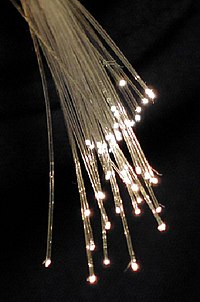
Photo from wikipedia
Purpose The paper aims to focus on a vision-based approach to advance the automated process of the manufacturing of an Airbus A350’s pressure bulkhead. The setup enables automated deformation and… Click to show full abstract
Purpose The paper aims to focus on a vision-based approach to advance the automated process of the manufacturing of an Airbus A350’s pressure bulkhead. The setup enables automated deformation and draping of a fiber textile on a form-variable end-effector. Design/methodology/approach The proposed method uses the information of infrared (IR) and color-based images in Red, Green and Blue (RGB) representative format, as well as depth measurements to identify the wrinkles and boundary edge of semi-finished dry fiber products on the double-curved surface of a flexible modular gripper used for laying the fabric. The technique implements a simple and practical image processing solution using a sequence of pixel-wise binary masks on an industrial scale setup; it bridges the gap between laboratory experiments and real-world execution, thereby demonstrating practical and applied research. Findings The efficacy of the technique is demonstrated via experiments in the presented work. The two objectives as follows boundary edge detection and wrinkle detection are accomplished in real time in an industrial setup. Originality/value During the draping process, tensions developed in the fibers of the textile cause wrinkles on the surface, which are highly detrimental to the production process, material quality and strength. The proposed method automates the identification and detection of the wrinkles and the textile on the gripper surface. The proposed work aids in alleviating the problems caused by these wrinkles and helps in quality control in the production process.
Journal Title: Assembly Automation
Year Published: 2019
Link to full text (if available)
Share on Social Media: Sign Up to like & get
recommendations!